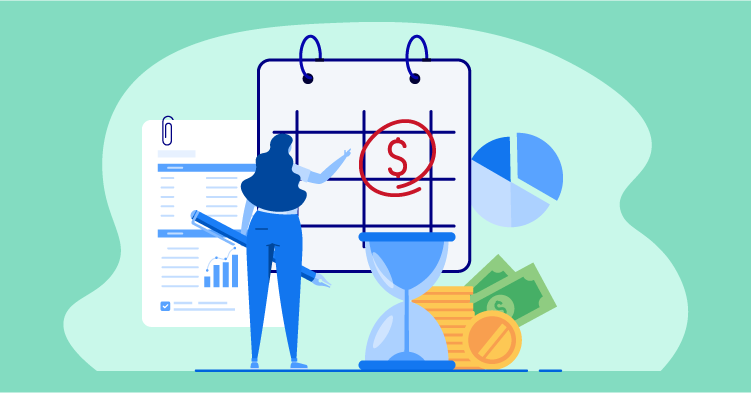Invoice Factoring vs. Line of Credit: Weighing Your Options
Cash flow gaps are a common problem for many small businesses — and a business line of credit and invoice factoring are two common solutions business owners turn to. Each of these options can offer your business the funding it needs, but they also come with their own pros and cons.
How do you determine which is the right option for your business?
Let’s take a look at the difference between invoice factoring and a business line of credit, explore how each option works, and address a few of the factors you should consider when making a decision.
What’s the Difference Between Invoice Factoring and a Business Line of Credit?
Invoice factoring and a business line of credit are both financing options that businesses use to manage cash flow, but there are some major differences in how they work.
Business line of credit. A business line of credit is a form of revolving credit that allows the borrower to draw funds up to a certain amount to cover expenses. It’s a flexible form of borrowing that allows you to borrow the amount you need (up to your credit limit), when you need it. As you repay, the funds will become available for you to borrow again.
Invoice factoring. Invoice factoring (also called “accounts receivable factoring”) isn’t a form of borrowing like a line of credit. Instead, you sell your unpaid invoices to an invoice factoring company for a percentage of the invoice amount. They’ll take over the responsibility of collecting payment from your customers.
How Does Invoice Factoring Work?
If you’re having cash flow problems, invoice factoring can be an option to get quick cash to help pay for business needs. You’re essentially trading some revenue in exchange for immediate cash since you will lose out on a portion of the invoice value. Here’s how it typically works:
Sign a factoring agreement. When you sell your invoices to a factoring company you’ll need to sign an agreement outlining the terms. Be aware that factoring companies don’t work with every industry, and the agreement terms can vary.
Get advanced funding. After you’ve sold your invoices, the company will typically advance you 80% to 90% of the amount they bought them for.
Collection. The invoice factoring company will take over the responsibility of collecting the payments from your customers. Your customers will be notified when you sell the invoices.
Get the remaining balance. After the payments have been collected, the invoice factoring company will deduct their factoring fees and pay the remainder of what they owe your business.
Keep in mind that depending on the type of factoring agreement you sign, you may have to pay for any invoices they are unable to collect within a reasonable amount of time — this is called recourse factoring.
How Does a Line of Credit Work?
A line of credit is a flexible borrowing option that allows you to get the cash you need without selling your invoices. A business line of credit is a form of revolving credit (though it’s different from a business credit card). It can make cash flow management easier and help ensure that you have working capital on hand when you need it. Here’s how it typically works:
Get a credit limit. If you’re approved for a line of credit by a lender, you’ll sign an agreement that outlines things such as your interest rates, payment terms and your credit limit. Your credit limit is the maximum amount you can borrow before repayment.
Take a draw. When you need funds, you can request a draw. You can borrow what you need by drawing just a portion, or you can draw up to your available credit limit. You’ll only pay interest on the amount you borrow.
Start repayment. As you begin to repay, the funds become available to draw again. This means you don’t have to reapply the next time you need funds. As long as you haven’t hit your credit limit, you can request more funds from your available credit.
Pros of Invoice Factoring
It may be easier to get approved. Qualifying for invoice factoring is often easier than obtaining a bank loan. It’s not a form of borrowing, meaning you may get approved even with little to no credit history.
It offers quick cash. Invoice factoring allows you to immediately access a portion of the money tied up in accounts receivable, which can help you manage cash flow problems.
No debt. Invoice factoring isn’t a loan, so there isn’t a debt to repay. The money comes from your accounts receivable. If you have a resource factoring agreement, you may have to pay for the invoices the factoring company isn’t able to collect.
Cons of Invoice Factoring
Cost. Factoring fees can be expensive, making invoice factoring a more costly type of business financing than some of the traditional financing methods.
Limited funding. The amount you can factor is limited by the value of your outstanding invoices.
Customer involvement. The factoring company takes over the collections process and your customers may not appreciate being contacted by a third-party for payment.
Pros of a Business Line of Credit
Flexibility. A small business line of credit provides a revolving source of funds that can be accessed as needed. This gives you the flexibility to borrow what you need, when you need it.
Building business credit. Responsible use of a line of credit can help you build and improve your business credit score. Good credit can open the door to better financing solutions in the future.
Lower cost. The interest rates on a line of credit are typically less expensive than factoring fees. Plus, with a line of credit you only pay interest on the amount you borrow.
Cons of a Business Line of Credit
Risk of overspending. Easy access to funds can lead to overspending and debt if a line of credit isn’t managed properly.
Qualification standards. Banks and other financial institutions will look at your creditworthiness, financial statements and other documents in order to determine approval. While a bank line of credit can have strict standards, online lenders are often able to be more lenient.
Interest charges. While a line of credit is often a less expensive type of financing than invoice factoring, you still have to pay interest on the amount you borrow.
Is Invoice Factoring or a Business Line of Credit Better for My Business?
Whether or not invoice factoring or a small business line of credit is better for your business will depend on your unique financial situation. Both options can provide the funds you need fast. If you’re a startup or you want to avoid taking on debt, you could consider invoice factoring. A line of credit could be a good option if you want flexibility and control over your finances to manage ongoing working capital needs. You can also look into other options like business loans if an upfront lump sum of cash would fit your needs better. Ultimately, your decision should align with your business’s goals, financial situation and growth plans.
This content is for educational and informational purposes only, and is not intended as financial, investment or legal advice.



